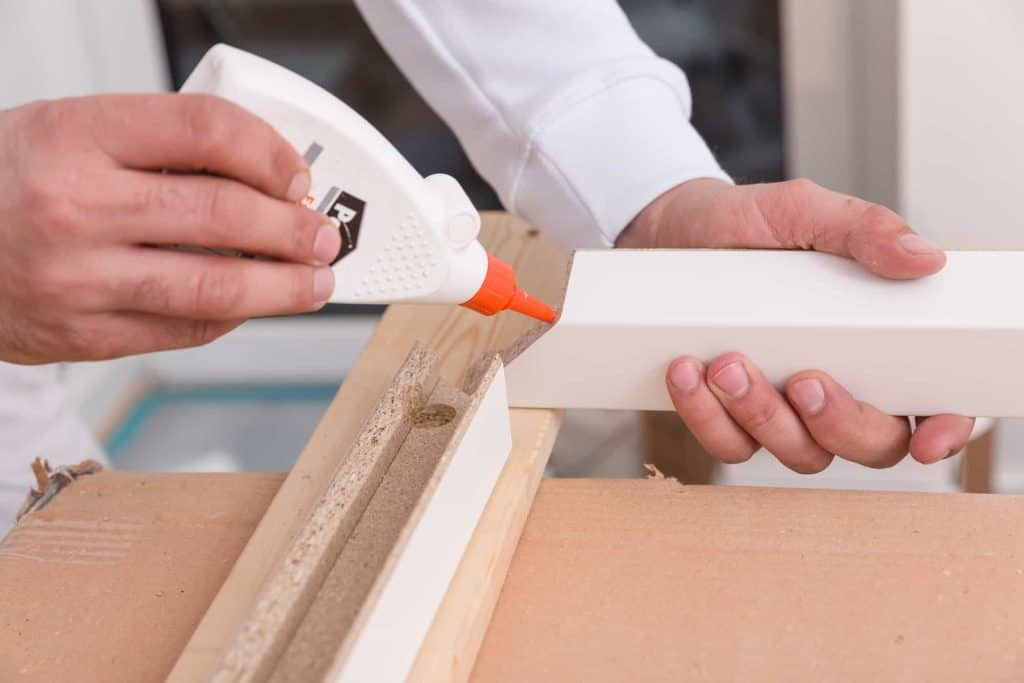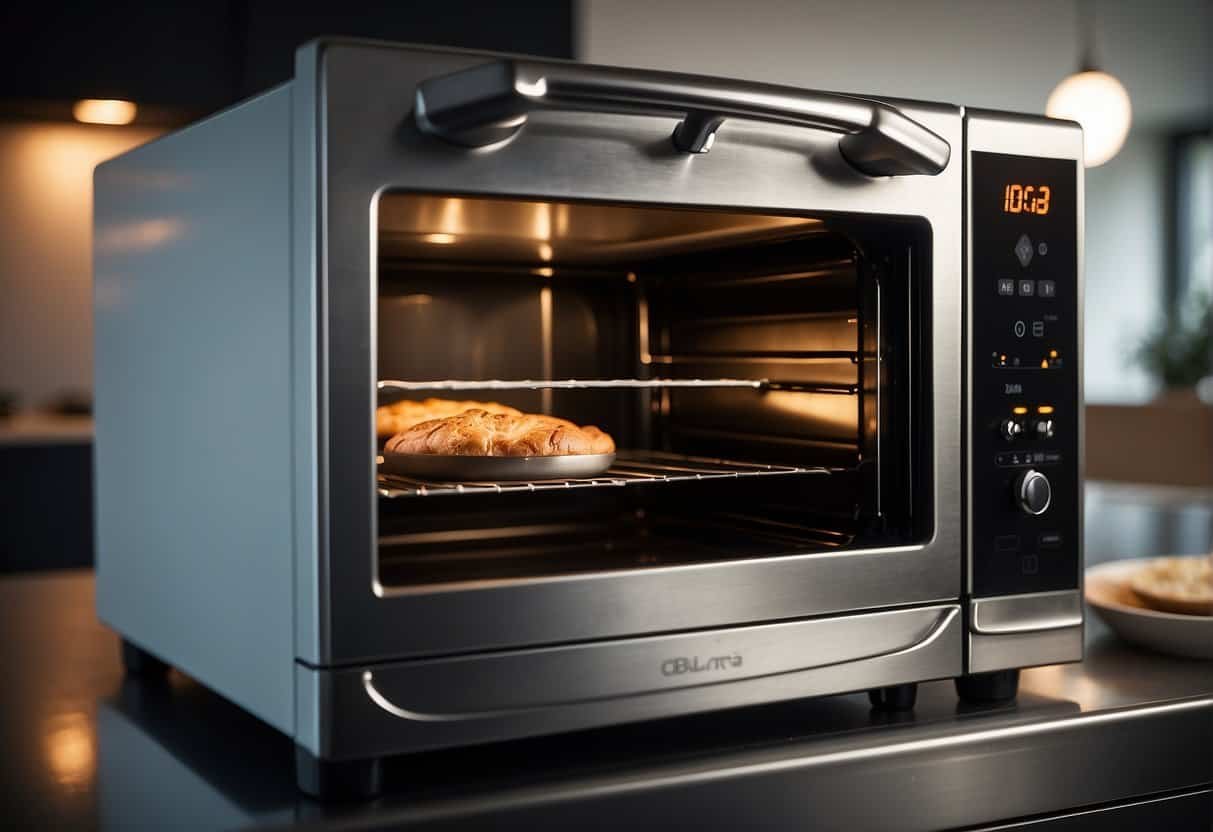Knowing how long it takes for wood glue to dry is important if you want to create sturdy pieces that will last long. New woodworkers are often at a loss here, typically following the manufacturer’s directions. Is this always the right approach, and are there factors that can affect the wood glue dry time?
Wood glue can dry between five minutes and an hour in most cases. However, the type of glue and the environmental conditions you’re working in can affect the dry time. Allowing additional drying time beyond the manufacturer’s recommendation is a safe approach to ensure complete adherence.
In this article, you’ll learn more about wood glue dry time, how environmental factors can affect the wood and more.
How Long Does Wood Glue Take To Dry, Set, or Cure?
The first thing you should know is the difference between glue drying and glue setting or curing. Drying here refers to when your glue is structurally sound enough to hold pieces together without external help (like clamps) (Source: The Saw Guy).
When the glue has dried, it still hasn’t cured. Curing refers to when it has reached its full bond strength. At this point, it can withstand everyday use. No matter how long it takes for the glue to dry, curing will take a lot longer. Even when the glue dries in half an hour, it can take up to a day for it to fully cure.
So, what’s the typical drying time for wood glue?
Generally, you can stick to the manufacturer’s recommended dry time as shown on the body of the product. However, it’s usually not that straightforward. The recommendations they give are for the specific product, and they also assume you’d use it in the same in-house test conditions.
A few factors come together to determine just how long you have to wait for the wood glue to dry. They include the following:

The Type of Glue
Some of the most common wood glues used in projects today include:
- Polyvinyl acetate. This is arguably the most common type of wood glue around today. PVA glue products are known for their immense bonding power. Depending on specific manufacturer formulas, these products can dry within an hour.
- Polyurethane glue. This type of glue expands while drying and doesn’t start to dry until it comes in contact with moisture in the air. It’s waterproof but will take a minimum of an hour and up to two hours to dry.
- Cyanoacrylate glue. This type of glue is more commonly known as “super glue.” It dries fast but is not as strong as PVA or polyurethane. So, it’s only useful for gluing inlays, repairing small chips, or holding wood pieces temporarily before fastening. You can expect products in this category to dry in less than ten minutes.
- Hide glue. This type of glue made from animal hide is similar to stronger synthetic glues, but it is biodegradable and non-toxic. It’s also cheaper overall, but it’s not the best option if you want your finished piece to be waterproof. Hide glue will dry in less than three hours.
- Epoxy glue. Epoxy wood glue combines a hardener and a resin to form a strong bond. The result is waterproof bonding. However, they don’t work well with wood types with high acid content (think Cherry or Oak), and the drying time varies a lot across different brands. Still, expect it to dry in under an hour once you get the mix of hardener and resin right.
The Type of Wood and the Moisture Content
The type of wood you’re working on can also have an impact on the dry time for your wood glue. Porous wood will need more time to dry as you’re going to use multiple layers of glue (due to wood absorbing some of the glue) to create a strong bond. On the other hand, denser wood will dry quicker as it needs just a layer of glue.
Similarly, wood with high moisture content will take a lot longer to dry compared to wood that’s dry enough.
The science behind this is simple.
Wood glue dehydration is how it gets dry. Some of the moisture exits the glue into the atmosphere through evaporation, while some of it is absorbed into the wood.
So, a high level of moisture means the wood won’t absorb as much moisture from the glue, hence why it will take a bit longer to dry. It’s like when you’re trying to clean a water spill with a wet or dry rag.
With all of these factors considered, you can see that the wood glue drying time can vary greatly. Still, you can expect your wood glue to dry in less than three hours. If some of the external factors we’ve seen here are in play, it’s best to just wait 24 hours.
Other Environmental Factors
The biggest environmental factor that can affect wood glue dry time is humidity. This is the air’s moisture content. When working in a low-humidity environment, the glue will dry in line with the times quoted on the body of the product. Otherwise, it can take double the time or more.
The overall temperature of your workshop can also affect the glue drying time. This is why most manufacturers include a temperature range to use the glue in the description or label.
Generally, this shouldn’t be a problem. However, if you live in a place where temperatures top 100°F (37°C) or where it drops below zero frequently, the wood glue’s drying process might be strongly affected.
Wood Glue Drying Times by Brand
We’ve seen a general look at how long it takes for different types of wood glue to dry. How about specific brands? Below is a quick table:
| Wood Glue Brand | Drying Time |
| Gorilla Glue | 20-30 minutes. |
| Titebond | 30 minutes-1 hour for unstressed joints and 24 hours for stressed joints when using standard Titebond wood glue products.45 minutes for Titebond polyurethane glue. |
| Elmer’s | 30 minutes. |
Wood Glue Clamp Time: How Long to Leave It
If you’re working on a project that requires you to clamp the piece, it’s best to leave the clamp on for at least 30-minutes (Source: Ace Maker Space). However, it’s a good idea to leave the clamp on for at least double the glue dry time to be completely safe.

Which Wood Glues Have Long Open Times?
“Open time” refers to how much time you have, from when you spread the wood glue to when you join the glued surfaces. If glued pieces are not assembled within the open time, achieving proper bonding might be difficult (Source: Cottage Life).
If you’re working on a complex piece, you’ll need a long open time to ensure proper wood glue application and proper assembly. The wood glues that have long open times include:
- Titebond III (8-10 minutes)
- Lee Valley Cabinetmaker’s Glue 2002 GF (15+ minutes)
- Titebond II Extend Wood Glue (15+ minutes)
- Gorilla Glue (10-15 minutes)
I hope this helps you map out how much time your project will REALLY take, if you factor the wood drying time into it. Patience and good glue application will go a long way to a better finish!










